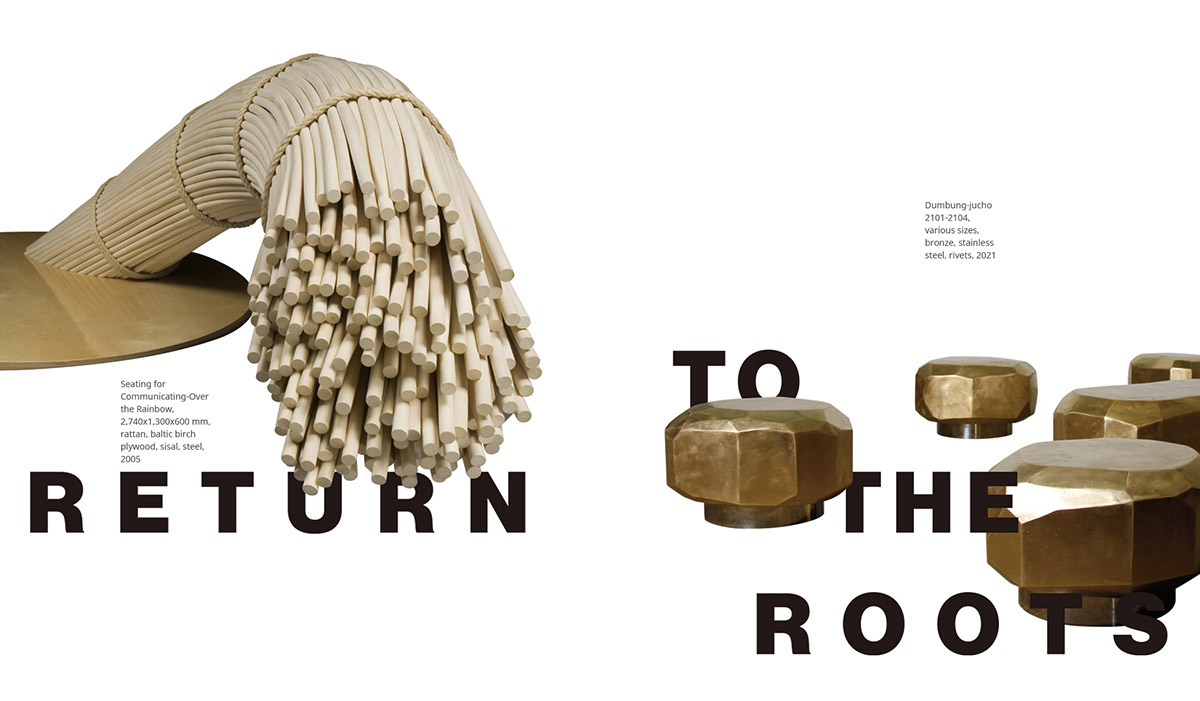
Art+Future
- Writer.Sung Ji Yeon
- Photos courtesy of.Jung Myungtaek
Every work of art is imbued with history and culture. Viewers of artwork love to tease out those tantalizing connections, which are not always easy to unlock. But Jung Myungtaek’s furniture opens up to the viewer, speaking in a natural voice. His work is tied to his roots in Korean history and the Korean ethos, providing a first-hand experience of their beauty. That is just one way Jung’s furniture enriches viewers’ lives.
Jung Myungtaek
Q. What are the themes of your work?
My work embodies three themes: the pure beauty of “the absence of activity,” the plain beauty of “the absence of mind or desire” and the spatial beauty of “the absence of shape.”
Q. Which pieces would you say best represent those three themes?
One piece representing the pure beauty of “the absence of activity” is “Doom.” It’s a brass bench that drew inspiration from the foundation stones at the Hwangnyongsa temple site, which today is little more than an empty field in Gyeongju. I was contemplating Korea’s unique ethos and nature when I came upon stones sitting there by themselves, containing memories from 15 centuries ago. As I considered the human will wrapped in stones that had survived for so long, I felt I was becoming one with it. Filled with the urge to reinterpret the stones in metal, I studied those forms and textures, and then, after countless experiments, I completed the piece.
“On the Log” represents the plain beauty of the absence of mind or desire. The inspiration for this work came from the curved lines of Hanok (traditional Korean houses). I sought to reproduce the beauty of those simple curves by alternating long and short curves. I also used a chainsaw to express the modest, simple and unrefined surfaces of bakseok(paving stones used between palace buildings), stone walls and the wooden pillars in Hanok.
“Maru” is the piece I would say embodies the spatial beauty of “the absence of shape.” While doing my undergraduate studies in 1997, I did a group project where we made a daecheong maru (a hall with two rooms). That was when I noticed the distinctive Korean beauty of moderation and decided I wanted to work with Korean maru(a wood-floored hall) someday. That ambition became a reality with “Maru” which I unveiled in a solo exhibition in 2021. The piece consists of 140 stools made of Hanok floorboards that had been used for hundreds of years.
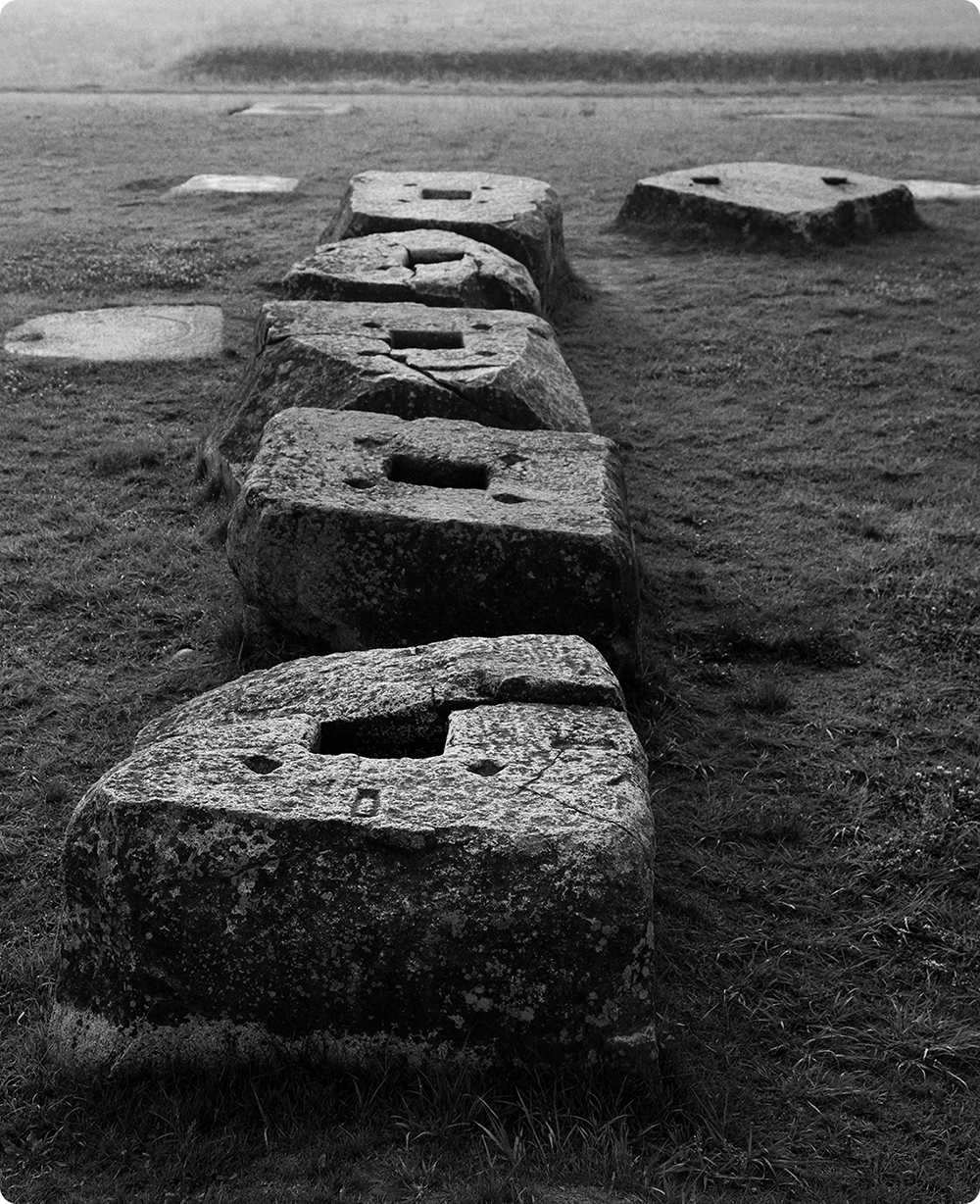
The conerstones of Hwangnyongsa temple site, digital printing, including frame 1,100x1,700 mm
Q. What are your typical sources of inspiration?
I get my inspiration from ancient Korean architecture, and more specifically from the cornerstones, pillars and maru of those old buildings. Only in my late thirties, after completing my studies in the United States, I began to explore what is unique about Korean beauty to understand our ethos properly. That was when I realized the Korean spirit was inherent in ancient ruins, artifacts and architecture. So now I’m exploring ancient Korean architecture’s functions, materials and meaning from various perspectives while seeking new viewpoints in my work.
Q. Are you choosing the motif of Korean architecture to express the Korean spirit?
What I’m trying to do is to create works that encapsulate my identity. Before I could do that, it was necessary to understand my cultural background and research Koreans’ unique identity. So, I explored ancient ruins and relics in search of my background. The roots I found there—Korean ethos and values—were then subsumed into my work. More specifically, ancient Korean architecture reflects a “naturalistic spirit” that sought to use unprocessed natural materials, avoid overstated forms of expression and achieve harmony with nature. My work’s three basic themes are identical to ancient Korean architecture’s characteristics.
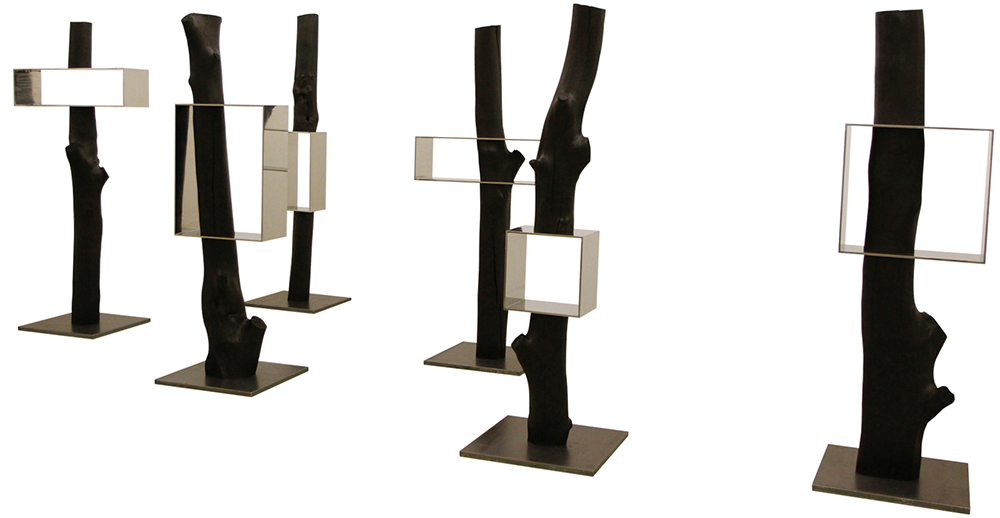
Creating a Void 16S1-16S6, various sizes, maple, stainless steel, steel, 2016
Q. Why do you make furniture with wood and metal?
The characteristics of these two materials are a good fit for my approach to artwork. I don’t pursue perfection because I know I’m incapable of it. When the time is right, I step away from my work and leave the rest to time since the passage of time can add depth to a piece. I regard wood and metal as good materials for making pieces that need time. Wood evokes a gentle mood, and metal is sturdy and has a rich capacity for expressing texture, which gives my work its unique feel. In addition, these two materials have distinct colors and textures that become even more appealing with time.
Q. What do you want the public to think about your work?
Through my work, I seek to reinterpret three absences: “the absence of activity,” “the absence of mind or desire” and “the absence of shape.” I’m expressing a natural state in which something is brought into being and finds its place without human intervention. Given the natural state expressed in my work, I hope my viewers will also be able to interpret my work while experiencing the purity of the materials, the plainness of their form and their presence in space. If my pieces become beloved furnishings that fit into people’s daily lives, so much the better.
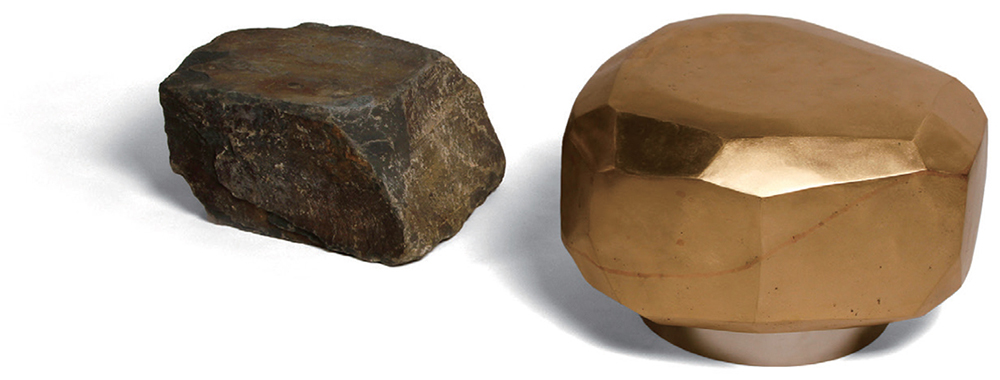
Dumbung-jucho 2104,
(bronze) 600x620x385 mm, (stone) 660x470x310 mm, bronze, stainless steel, rivets, stone, 2021
Q. Please share your aspirations.
I want to carry out further research into the three themes of “the absence of activity,” “the absence of mind or desire” and “the absence of shape” while learning about new forms and acquiring a new sense of beauty. I would like to display art furniture representing “the absence of activity” that conveys the status and spirit of Korean culture through the five elements of unique cultural identity, a new zeitgeist, an original artistic language, embodied meaning and artistic value.
Q. What plans do you have for the future?
The pieces I’ve released this year include a bronze stool that takes the motif of stepping stones, a walnut table that draws structurally upon the beams of a Hanok, and a bronze objet d’art that recreates the gnarled surface of a tree. I eliminated the rough texture from the round part of the stool and would like to make more stools of that form. I’m also planning a second version of “Doom.” I have an exhibition in Shanghai scheduled for the second half of the year and a private show for next year. In addition, new works from the “Maru” series, titled “Architecture and Crafts,” will also be exhibited at the Seoul Museum of Craft Art starting Sept. 2.
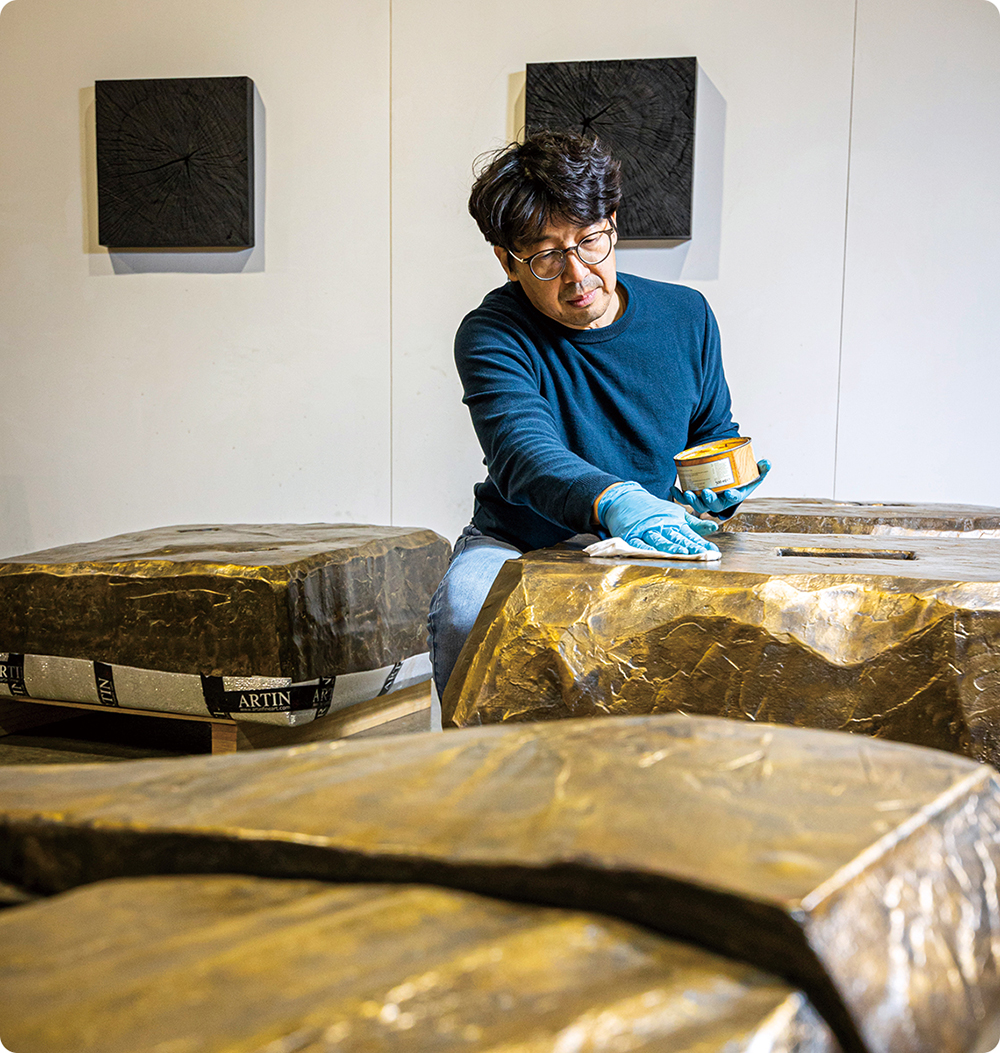
Jung Myungtaek
An artist who dreams of creating art furniture that represents the beauty of absence





